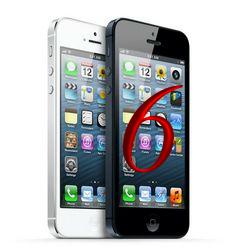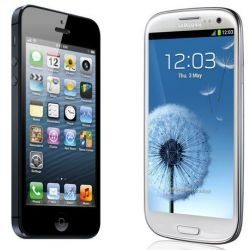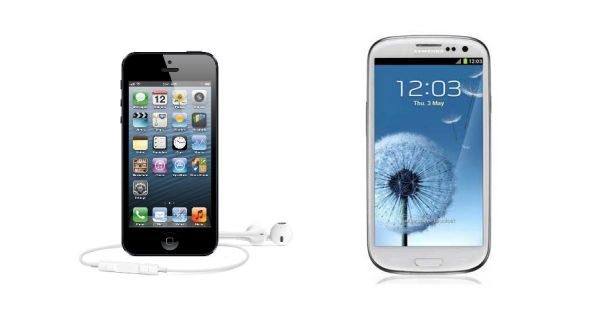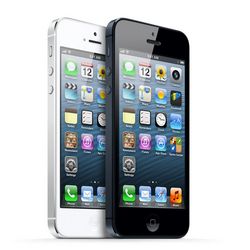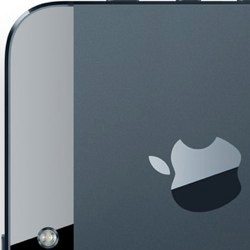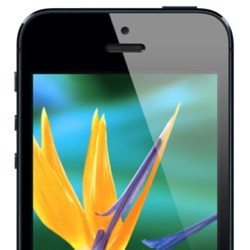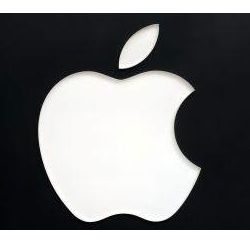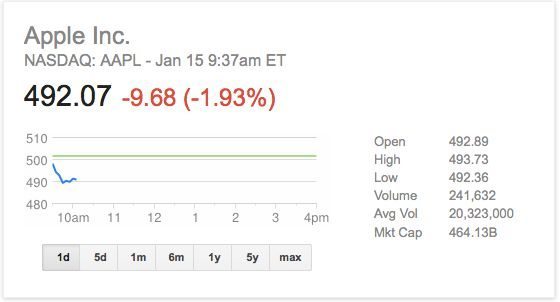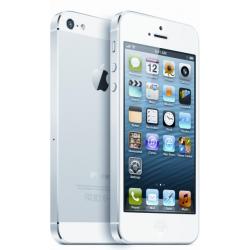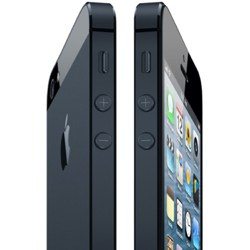 Ever since Apple introduced the original iPad back in 2010, the Android ecosystem has been constantly attempting to imitate its success. However, despite the enthusiasm with which Android manufacturers have announced tablet devices of their own in 2010 (at the time, the entire industry seemed to be affected by a tablet frenzy virus of some sort), only a few of them have managed to escape the “failure” stigma. 2011 was not a great year for Android tablets either, despite the fact that Google had launched its first tablet version of Android 3.0 Honeycomb. (The Motorola Xoom has Nexus status when it comes to new OS updates from Google.)
Ever since Apple introduced the original iPad back in 2010, the Android ecosystem has been constantly attempting to imitate its success. However, despite the enthusiasm with which Android manufacturers have announced tablet devices of their own in 2010 (at the time, the entire industry seemed to be affected by a tablet frenzy virus of some sort), only a few of them have managed to escape the “failure” stigma. 2011 was not a great year for Android tablets either, despite the fact that Google had launched its first tablet version of Android 3.0 Honeycomb. (The Motorola Xoom has Nexus status when it comes to new OS updates from Google.)
Fortunately for Android fans though, 2012 has been a great year for Android tablets: first there was the avalanche of Nvidia Tegra 3 Android 4.0 tablets (the first Android version to unify both the tablet and the smartphone version of our favorite OS) that launched in the first part of the current year (the ASUS Transformer Prime gets a noteworthy mention here). This was the first batch of Android tablets that did not suck big time.
Fast forward to July 2012 and we reach a crucial point for the Android tablet market: the launch of the first Google Nexus tablet, the Nexus 7. To date, the Nexus 7 is the most successful Android tablet to have ever reached the market. ASUS says that Nexus 7 units are currently shipping at a rate of roughly 1 million per month – not exactly a number that can take on the iPad, but definitely a sign that consumers are now willing to buy Android tablets as long as they are priced aggressively.
But despite the commercial success of the Nexus 7 tablet, Apple’s iPads were not threatened at all, since the Nexus 7 is a budget 7-inch tablet, while the iPad aims for the top-end segment of the market. Fast forward a few extra months and now we witness the launch of the Google Nexus 10, the most powerful Android tablet to have ever reached the market, and a genuine Apple iPad competitor.
But is this Android tablet able to take on the latest version of the iPad (4) on the latter’s home ground? Read on and find out!
Display
When Apple introduced the iPad 3 with a Retina display, plenty agreed that the new (now old) iPad featured the best tablet display ever, with the iPad 2 display coming in at a distant second. The slight update that Apple names “the iPad 4” comes with that same display: a 9.7-inch LED-backlit IPS TFT panel working to power 2048 x 1536 pixels at a 264 PPI (Pixel Per Inch) density.
As the resolution clearly denotes, the Apple iPad 4 uses the same 4:3 aspect ratio as all the other members in the iPad family, a sort of trademark for the Apple iPad line. Although only crazy people can claim that the display on the iPad 4 is not absolutely wonderful, there’s a new boss in town!
Yep, we’re talking about the Google Samsung Nexus 10 and its 10.055-inch display running a 2560 x 1600 pixel resolution. Simple math gives us a PPI ratio of 299. Now, given that Apple heavily markets the Retina iPad display as the crispest display around, it is very pleasant to see that the Nexus 10 features a display that offers an even higher PPI ratio than its direct competitor, as it will surely instigate other Android tablet manufacturers to equip their high-end tablets with displays of higher quality.
Although there are other things to praise about the Nexus 10, the extra high resolution display is probably its best selling point. As expected, one of Google’s marketing efforts for the Nexus 10 aims to prove that the display on the Nexus 10 is actually so crisp that it offers print-like quality when reading magazines.
Early reports claim that the actual difference when reading text is not easily distinguishable between the Nexus 10 and the Nexus 7, although there are some who give credit to the Nexus 10. Now, we’re unable to judge before we get the Nexus 10 in our hands, but it should be mentioned that some early reviewers claim that the iPad 4 has better contrast, black levels and viewing angles than the Nexus 10, while the latter has the advantage in the (few) games that have been updated to make use of the high resolution display. The number of apps that are optimized for such high tablet display resolutions will be discussed later in this article since it has nothing really to do with the display itself.
Verdict: Draw – The Nexus 10 might have a crisper display, but the iPad 4 has better contrast and wider viewing angles.
Build Quality & Design
When it comes to the design of our two contenders, things really leave the impression that they could not have been any different than they are right now. The Apple iPad 4 and the Google Nexus 10 look to be designed with different philosophies in mind. While the unibody aluminum frame of the iPad 4 gives the Apple tablet some sort of shiny, classy look, much like a very expensive watch, the Nexus 10 is designed to look and feel like a toy (remember that Google markets Android apps and content in a “Play Store”), a gadget that you can pass around the house for everyone to take their shots at besting your record in Fruit Ninja.

As far as build quality is concerned, the iPad 4 isn’t the sturdiest tablet out there (but not too easy to break either) as the aluminum will easily scratch after some time of intense (or sloppy) usage, while the Nexus 10 looks like it can sustain a bit of damage without manifesting unpleasant exterior signs. The rubbery material that Samsung has used is obviously reminiscent of the rubbery back of the Nexus 7. Bezel width doesn’t seem to be important in the Google tablet design philosophy, although I’m sure some prefer the narrower bezel on the iPad 4.
On to exact dimensions, the Google Nexus 10 measures 263.8 x 177.8 x 8.9 mm (10.39 x 7.00 x 0.35 in) and weighs 603g (1.33lb), while the Apple iPad 4 measures 241.2 x 185.7 x 9.4 mm (9.50 x 7.31 x 0.37 in) and weighs in at 662g (1.46lb). Due to the difference in screen size as well as that of aspect ratios between the two contenders, the Nexus 10 is considerably taller but a little narrower.
The difference in weight – 60 grams might seem negligible, but some argue that 600 grams is already too much to comfortably use for a long period of time (as in watching movies or reading). The 0.5mm in thickness should be neglected as it will not affect the overall experience at all.
Hardware
As most iPad 3 fans already know (just in case you missed it, that was a burn) the iPad 4 features the spanking new Apple A6X SoC, one that packages together a 1.4GHz dual-core (Swift) processor and a quad-core PowerVR SGX 554MP4 GPU from Imagination Technologies. Apple has been cheap and has equipped the iPad 4 with 1GB of RAM although the current standard for high-end devices points towards 2GB of RAM. In all fairness though, you probably won’t know the difference.
When it comes to raw computing power, the iPad line has always featured the best CPU and GPU at the time of its launch. Just to give this segment a bit of context, you should remember that the iPad 3 featured a CPU and GPU that still trashes (in benchmarks) the entire Android ecosystem. When Apple announced that the only major improvement that the fourth generation iPad brings is a CPU / GPU combination that offers twice the raw power of the previous platform (the iPad 3 used the Apple A5X SoC), Apple seemed to distance itself even further. However, the Samsung Exynos 5 Dual SoC seems to be a real competitor for the newly released Apple A6X.
If you want a detailed analysis, go and read this article here from Anandtech, but what you should know in short is that the Exynos 5 Dual packages together a 1.7GHz dual-core ARM A15 processor and ARM’s new Mali-T604 (the 2012 Samsung Chromebook is also based on this SoC). Benchmarks scores show that the Nexus 10 has the fastest processor and GPU available on any Android device, ever. CPU benchmarks place the Nexus 10 right next to the iPad 4. GPU benchmarks prove that while the ARM Mali T604 is better than what the Android world know this far, no mobile graphical unit can rival the PowerVR SGX 554MP4 GPU so far.
Regarding the amount of RAM memory available on these two tabs, the iPad 4 features 1GB, while the Nexus 10 comes equipped with 2GB of RAM.
The Apple iPad 4 comes in three models depending on the amount of internal storage: 16GB, 32GB and 64GB, with no option to expand this storage via a microSD card slot. The Samsung/Google Nexus 10 comes in 32GB and 64GB variants, also lacking a microSD expansion slot.
One area where the Apple iPad 4 has a clear advantage over the Nexus 10 is the connectivity segment: while the Google Nexus 10 comes only in Wi-Fi only versions, Apple’s latest tab features 3G and LTE support. Like with the Nexus 7, Google will probably add a 3G version in the following months, but for the moment, the lack of a Nexus 10 with 3G connectivity is considered a minus by plenty of people.
As far as cameras go, the Apple iPad 4 uses a 5MP primary camera and a 1.2MP secondary camera, while the Google Nexus 10 uses a combo of 5MP and 1.9 MP cameras. Do not expect image quality to be extraordinary, but just enough for your basic point and shoot needs.
Probably a needed feature thanks to its ultra high resolution, the Google Nexus 10 is the only tablet than gets close to the huge battery capacity inside the Apple iPad 4. The Nexus 10 uses a 9,000mAh battery, while the Apple iPad 4 uses a 11,560mAh battery. Expect both these tablets to make it trough an entire day of moderate usage.
Image credit: HotHardware
Pricing is hardly an internal component, but it’s important to know the price difference between these two tabs. The Google Nexus 10 costs $399 in its 16GB variant and $449 in its 32GB variant. As mentioned earlier, both versions are Wi-Fi only. On the other hand, the Wi-Fi only versions of the Apple iPad 4 cost $499 for 16GB, $599 for 32GB, and $699 for 64GB. LTE connectivity costs an extra $130 for each version, meaning that the 16GB LTE-capable iPad 4 costs $629, and so on.
Verdict: The Nexus 10 gets close to the iPad 4, but the latter is the tablet with the best internal hardware out there
OS And Ecosystem
In the Android corner, the Google Nexus 10 uses the latest version of the Android OS 4.2 Jelly Bean. In the Apple corner, the iPad 4 runs on iOS 6.
Android 4.2 comes with plenty of features that are especially interesting on a tablet (multiple users being a personal favorite of mine), the thing to remember is that the featured capabilities of the operating system are just one half of the overall user experience pie. And, although I prefer Android 4.2 Jelly Bean over iOS 6 as a tablet operating system, Apple’s iPad 4 and App Store present a very polished experience for consumers and a huge variety of tablet-optimized apps.
The number and quality of Android apps that work well on a tablet is currently increasing exponentially (probably given the success of the Nexus 7), and it looks like Google is seriously trying to entice Android developers into designing better Android apps. Unfortunately for us Android fans, the Apple iPad 4 still offers way more tablet-optimized apps.
Verdict: I love Android, but the iPad 4 has a very mature app ecosystem with many more apps optimized for usage on the iPad.
Conclusion
Android is not ready to dethrone the iPad, but the Nexus 10 is more than just a consumer-oriented tablet. While the iPad 4 perfects the Apple recipe, the Nexus 10 feels like Google’s way of saying “developers, what are you waiting for?”. Android now has the hardware and the global reach to offer an experience that’s at least on par with that of the iPad’s, and with Google expected to sell loads of Nexus 10 tablets during this holiday season, it is starting to gain enough inertia to entice developers into developing Android tablet apps.
If you’re looking for the best Android tablet out there (and a decently priced one at that), the Google Nexus 10 is the only way to go. On the other hand, if you don’t prefer Android’s open source nature over Apple’s walled garden approach and all you really want is the best overall tablet out there, the Apple iPad 4 is the tablet you should buy. It never got this close, but the pricier iPad 4 wins this battle!
And how about you? Is it going to be the Nexus 10 or Apple’s latest iPad?



